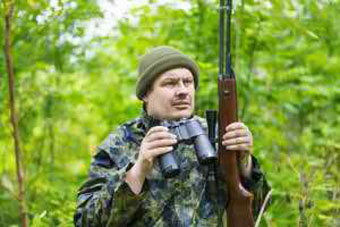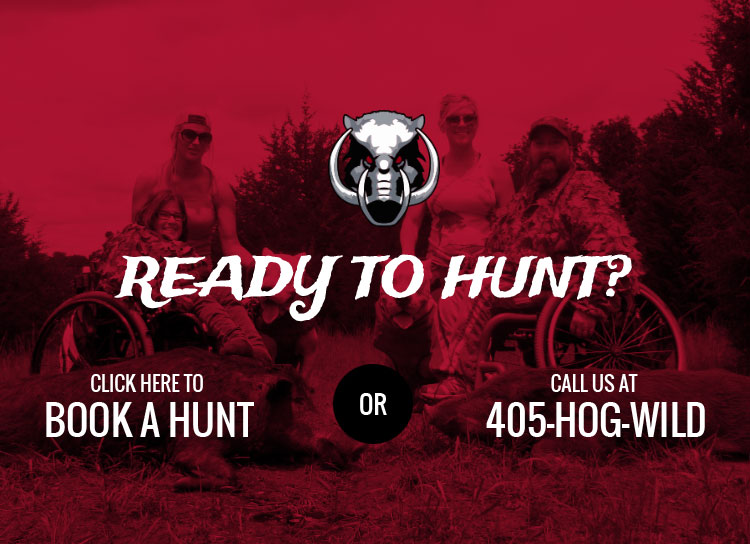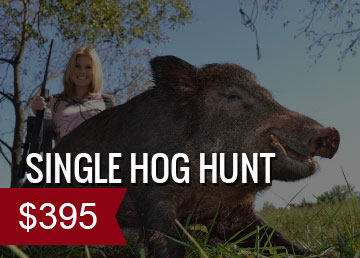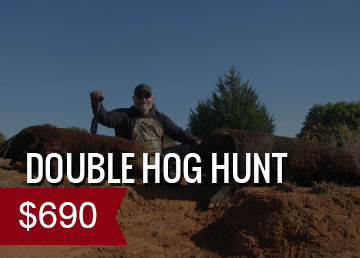Not every shot is going to be perfect and because wild hogs are so tough, even great shots may not bring them down immediately. Because of that we use a standard procedure for recovering wild hogs that keeps our hunters safe and helps ensure they get to take their trophy home with them.
It also helps us maintain our commitment to responsible hunting and wildlife management.
The importance of a clean shot
We’ve written before about the importance of making a quick kill as a matter of hunting ethics. In the case of wild hogs, it’s also critically important from a practical perspective.
Because wild pigs fight each other with sharp tusks, they’ve developed a number of characteristics that help them survive these fights. Their skulls are thick and the skin on the front of their bodies is incredibly tough.
Their wounds also clot much quicker than other animals. This makes them very hard to track by blood trail. In just a couple of minutes after being hit by a non-fatal shot, even serious wounds will clot and stop bleeding.
If a major organ like a lung is punctured, they may eventually die, but that might take several hours, giving the hog plenty of time to hide where you might never find it.
Rather than pushing them, it’s better to wait them out and hope they don’t venture far from where they were shot.
Staying safe
We have our hunters wait an hour before attempting to recover a hog they’ve shot. Together, we’ll follow at a safe distance (again, not pushing) to make sure we keep track of the animal and, depending on the situation, potentially give the opportunity for another shot.
An hour is normally enough time to ensure that the wild hog has actually expired and you’ll be safe approaching it. A live, but wounded hog is not an animal you want to get close to. They’re generally not very happy about getting shot and can use their sharp tusks to demonstrate just how unhappy they are.
This is another reason we maintain a safe distance while following wounded pigs and do our best to keep them in sight. Crawling on your hands and knees looking for a blood trail is not the best place to be if there’s an angry animal nearby.
That being said, it’s always better to shoot for a quick kill for everyone involved. But in the cases where we do need to track a hog, we do our best to help you recover the animal you’ve shot, keeping everyone as safe as possible in the process.












